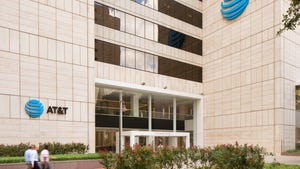StarHub taps up Nokia for network API pushStarHub taps up Nokia for network API push
Nokia has bagged another high-profile telco customer for its Network as Code API platform.
January 23, 2025

Singapore's StarHub has partnered with the Finnish kit maker to expose and monetise its network assets, targeting enterprises in the banking, finance, ports, online streaming, and public sectors.
"We are pleased to deepen our partnership with Nokia to deliver a simplified and improved developer experience," said StarHub CTO Ayush Sharma. "Giving developers access to a wider selection of attractive network APIs is critical to unlocking the full value of 5G and 4G networks in Singapore and the wider region."
Like Nokia, StarHub is a member of the GSMA-led Open Gateway initiative that is driving the exposure and distribution of network APIs. The telco also supports API development via the Linux Foundation's CAMARA project.
StarHub's keen involvement in these efforts reflects a broader enthusiasm in Asia Pacific (APAC) for all things API-related.
According to a recent GSMA white paper, APAC operators representing more than 50% of global mobile subscribers have signed up to its Open Gateway API initiative, making it the biggest single region worldwide.
APAC also accounted for 38% of the Open Gateway APIs that had been commercially launched as of last August – a greater proportion than anywhere else.
Singapore incumbent and StarHub rival Singtel is one of the more active players.
It got together in July with the Bridge Alliance – a group of APAC telcos that pool their resources and expertise to offer multinational connectivity services – to launch the Bridge Alliance API exchange (BAEx).
In keeping with the Bridge Alliance's ethos, BAEx will aggregate various of the members' network APIs, making it easier and more cost efficient for developers in the region to access and make use of them.
Singtel in October also partnered with Ericsson to develop a self-service platform that telcos can pitch to developers and enterprise customers.
These efforts are designed to lower the barriers to API uptake as much as possible, spurring developer adoption.
Keeping developers engaged is no easy task, given the amount of money being thrown at AI at the moment.
When Open Gateway first launched there was a lot of excitement among the telecoms industry and adjacent sectors – including hyperscale cloud – but that has since made way to a certain extent for AI hype.
GSMA Intelligence noted in its December API status report that hyperscaler activity on the API front has been subdued lately, which may reflect a diversion of resources towards "other priorities", namely AI.
Telcos can expose all the network APIs they like, but without sales channels and a pool of enterprises willing to pay for them, the opportunity will go begging.
Mobile World Congress (MWC) is looming large on the horizon, and the GSMA is doubtless under pressure to demonstrate that it's up to speed on all things AI, while also giving APIs the prominence necessary to maintain Open Gateway's momentum.
It's a tricky balancing act. Lean too heavily towards AI, and it sends a signal that APIs are no longer in vogue. But if it leans harder into APIs, there's a risk that the GSMA looks out of touch with what the rest of industry is excited about.
MWC 2025 could prove to be a defining moment for the network API ecosystem.
About the Author
You May Also Like










.png?width=300&auto=webp&quality=80&disable=upscale)


_1.jpg?width=300&auto=webp&quality=80&disable=upscale)